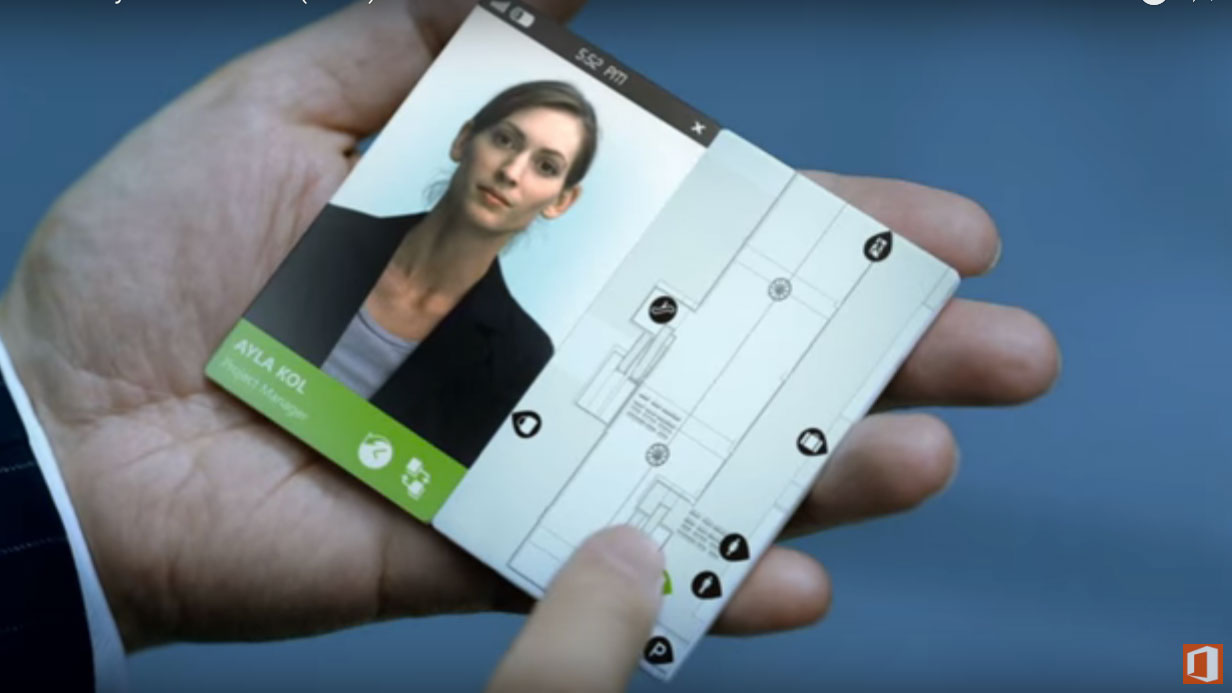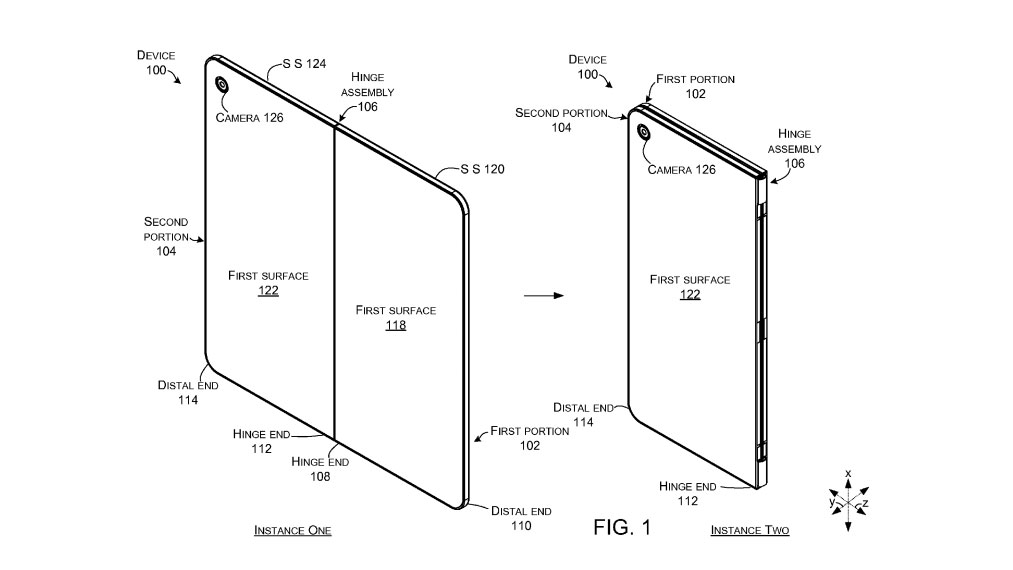Windows patent could be a glimpse of the future of the smartphone
All-screen everything

Windows has filed a patent that could give us a glimpse of what the (foldable) future of the smartphone could look like, showing a device with hinges that allow it to fold out to become a tablet.
According to the patent shared by MSPoweruser, the device has three different modes: zero degrees, where the device is closed, 180 degrees where the device is flat open, and 360 degrees, where the device is completely open.

Using deductive reasoning, you can assume that 180 degrees means that the screen surfaces form a tablet-like device. What is less clear is what the functionality would be in the other modes. There is a possibility that at zero degrees there is no screen showing, and at 360 degrees the screen ends up on both sides of the device.
Hmmm, handy...
Given that there is a camera embedded in the ‘back’ of one of the panels, what is more likely is that at zero degrees the device would function more like a traditional smartphone, then a tablet at 180, and a device we don’t currently have on the market at 360. The closest we’ve probably ever come was the Yotaphone 2, with its Electronic Paper Display on the back.
Having a screen on both sides of a handheld of device might seem counter-intuitive as one of the screens is facing your hand, but with rumors flying about at the moment that Apple’s new iPhone may have a screen on the back too, it could be that all-screen devices are simply the next wave in smartphone technology.
The patent is strongly reminiscent of one of the devices included in Windows’ 2009 video Productivity Future Vision. The video was a very high-concept look into what our interaction with screens could look like in the future:
At 2:07 there is a section that shows a man using a hand-held device that is nothing but screen, splitting the screen into two separate devices at one point. From looking at the patent, this device has both magnets and hinges so this concept is obviously a way off, but it does show that Microsoft has been thinking about this concept for a while.
Sign up for breaking news, reviews, opinion, top tech deals, and more.
As this is just a patent, there’s no guarantee that the device will ever see the light of day, but if it is even halfway to being like the device in the video, we would love to get our hands on one.
- Want to see what Microsoft's current offering to the market is like? Check out our Microsoft Lumia 950 review

Andrew London is a writer at Velocity Partners. Prior to Velocity Partners, he was a staff writer at Future plc.